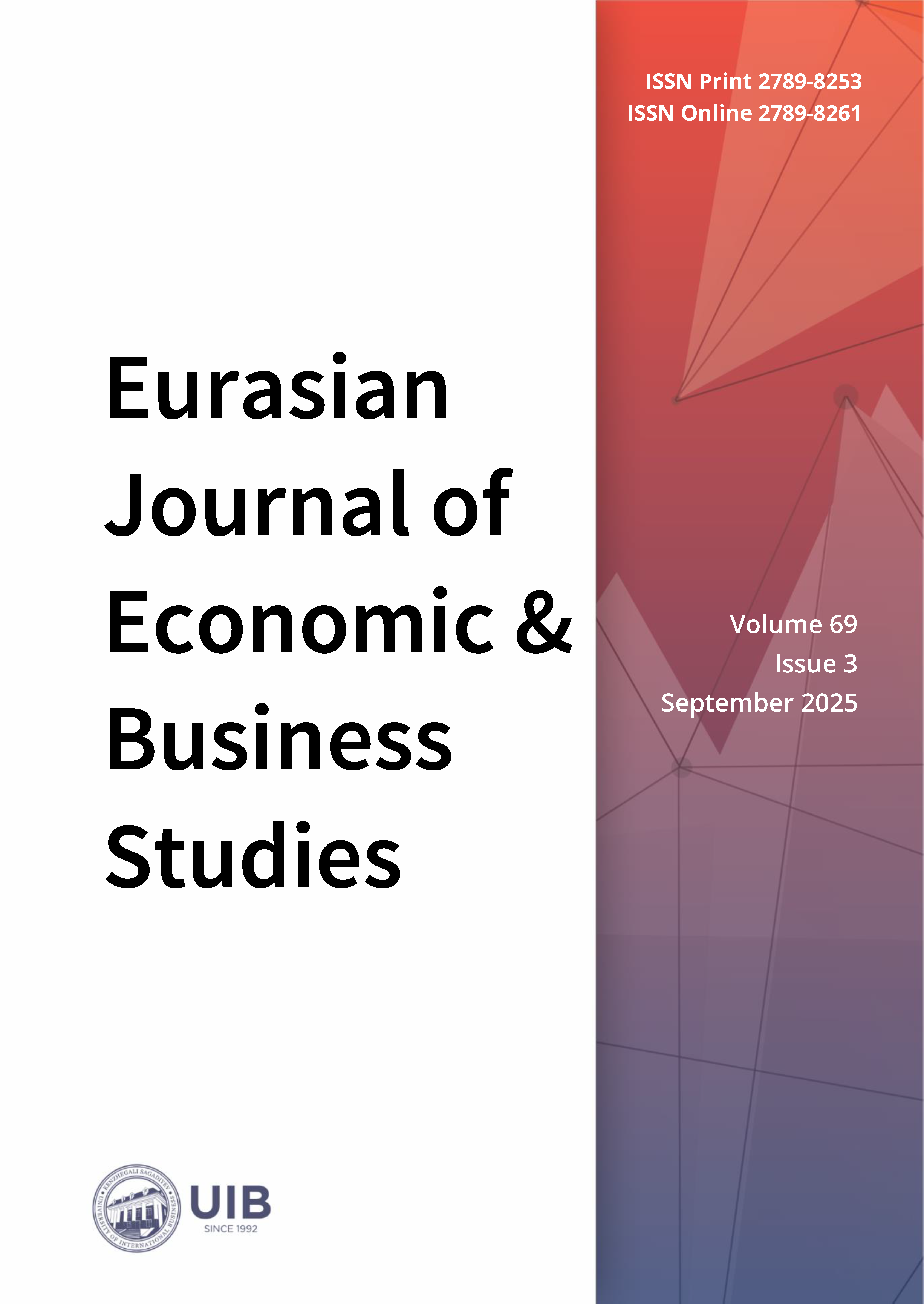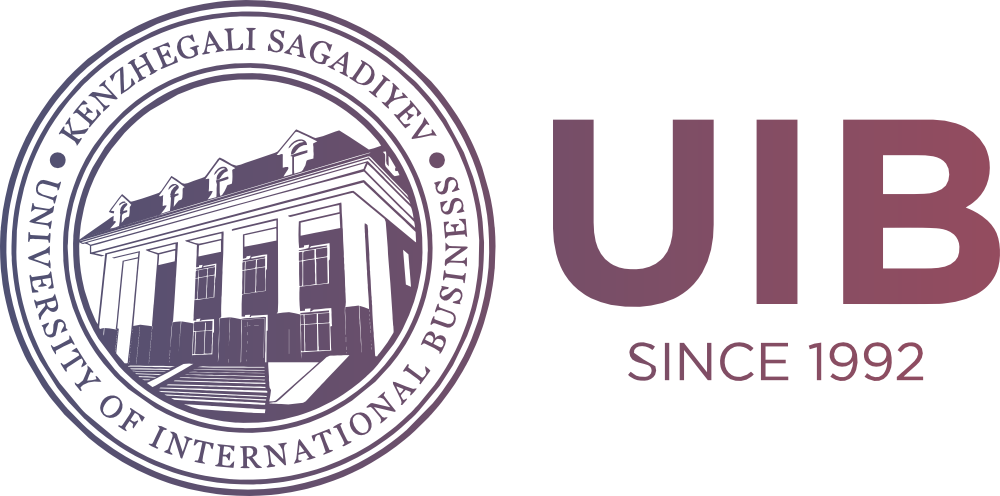Gender Influence on Public Administration Quality and Civil Legislation Modernization in Kazakhstan
DOI:
https://doi.org/10.47703/ejebs.v69i3.544Keywords:
Civil Law, Public Governance, Gender Equality, Rule Of Law, Corruption, Employment, Wage GapAbstract
The purpose of this study was to examine the impact of institutional factors on women's participation in civil law and public administration, and to identify areas for modernizing civil legislation to reduce gender inequality. The analysis covers the period from 2012 to 2023 and is based on official statistical data from the Bureau of National Statistics of Kazakhstan and institutional indicators from the Worldwide Governance Indicators. Correlation analysis, dual comparative assessment, and structural equation modeling (PLS-SEM) were employed to examine the relationships between gender-disaggregated labor market outcomes and institutional quality. The results confirm that democratic indicators are predominantly shaped by male employment and income (β = 0.910, p < 0.01), while the impact of women on democracy remains marginal (β = –0.044). In contrast, governance indicators demonstrate a strong association with women’s participation in the labor market and managerial positions (β = 1.096, p < 0.01), underscoring their role in enhancing transparency and accountability. The persistence of the gender wage gap and unstable female employment reflects structural barriers that are insufficiently addressed by institutional reforms. The findings suggest that modernizing civil legislation requires introducing gender audits, expanding women’s access to decision-making, and institutionalizing gender diversity in state structures. This research contributes to the literature on governance and legal modernization by providing empirical evidence of institutional determinants of gender inequality and offering policy recommendations for strengthening equality in public administration.
Downloads
References
Bako, M. J., & Syed, J. (2018). Women’s marginalization in Nigeria and the way forward. Human Resource Development International, 21(5), 425-443. https://doi.org/10.1080/13678868.2018.1458567
Bauhr, M., Charron, N., & Wängnerud, L. (2024). Will women’s representation reduce bribery? Trends in corruption and public service delivery across European regions. Political Behavior, 46(4), 2427-2450. https://doi.org/10.1007/s11109-024-09925-x
Begum, A. (2023). Political participation of female in Pakistan: Prospects and challenges. Unisia, 41(1), 39-76. https://doi.org/10.20885/unisia.vol41.iss1.art3
Bertrand, M., Cortes, P., Olivetti, C., & Pan, J. (2021). Social norms, labour market opportunities, and the marriage gap between skilled and unskilled women. The Review of Economic Studies, 88(4), 1936-1978. https://doi.org/10.1093/restud/rdaa066
Bureau of National Statistics. (2024). Bureau of National Statistics of the Republic of Kazakhstan. Retrieved September 27, 2025 from https://stat.gov.kz/en
Carmel, S. (2019). Health and well-being in late life: gender differences worldwide. Frontiers in medicine, 6, 218. https://doi.org/10.3389/fmed.2019.00218
Cheema, Q. U. A., Mahnoor, M., & Zahid, A. (2024). Advancing Good Governance: Leveraging Transparency, Accountability, and Anti-Corruption Measures. Pakistan Languages and Humanities Review, 8(2), 336-352. https://doi.org/10.47205/plhr.2024(8-II-S)31
Dar, S. A., & Shairgojri, A. A. (2022). Role of women in good governance. Journal of social science, 3(4), 648-655. https://doi.org/10.46799/jss.v3i4.360
DiRienzo, C. E. (2018). The effect of women in government on country-level peace. Global Change, Peace & Security, 31(1), 1-18. https://doi.org/10.1080/14781158.2018.1481023
Esarey, J., & Schwindt-Bayer, L. A. (2018). Women’s representation, accountability and corruption in democracies. British Journal of Political Science, 48(3), 659-690. https://doi.org/10.1017/S0007123416000478
Firdaus, F., & Wulandari, R. A. (2023). Implications of Low Women's Representation: Strategies and Challenges Towards Gender Equality in Indonesian Politics. Indonesian Journal of Religion and Society, 5(2), 138-153. https://doi.org/10.36256/ijrs.v5i2.383
Hansen, M. A., & Goenaga, A. (2021). Gender and democratic attitudes: Do women and men prioritize different democratic institutions?. Politics & Gender, 17(1), 23-52. https://doi.org/10.1017/S1743923X19000473
Jin, J. (2016). Female participation and corruption in the public sector. International Review of Public Administration, 21(4), 305-319. https://doi.org/10.1080/12294659.2016.1270577
Lwamba, E., Shisler, S., Ridlehoover, W., Kupfer, M., Tshabalala, N., Nduku, P., Langer, L., Grant, S., Sonnenfeld, A., Anda, D., Eyers, J., & Snilstveit, B. (2022). Strengthening women's empowerment and gender equality in fragile contexts towards peaceful and inclusive societies: A systematic review and meta‐analysis. Campbell systematic reviews, 18(1), e1214. https://doi.org/10.1002/cl2.1214
Mastracci, S. (2017). The effect of women’s representation on the Global Gender Gap Index. International Journal of Public Sector Management, 30(3), 241-254. https://doi.org/10.1108/IJPSM-05-2016-0095
Mechkova, V., Dahlum, S., & Petrarca, C. S. (2024). Women's political representation, good governance and human development. Governance, 37(1), 19-38. https://doi.org/10.1111/gove.12742
Mlambo, C., & Kapingura, F. (2019). Factors influencing women political participation: The case of the SADC region. Cogent Social Sciences, 5(1), 1681048. https://doi.org/10.1080/23311886.2019.1681048
Mollica, C., Davies, S. E., True, J., Eddyono, S. W., Fonseka, B., & Johnston, M. (2022). Women and the Justice Divide in Asia Pacific: How can Informal and Formal Institutions Bridge the Gap?. Human Rights Quarterly, 44(3), 612-639. https://doi.org/10.1353/hrq.2022.0029
Nchofoung, T., Asongu, S., Tchamyou, V., & Edoh, O. (2023). Gender, political inclusion, and democracy in Africa: Some empirical evidence. Politics & Policy, 51(1), 137-155. https://doi.org/10.1111/polp.12505
Ratu, D. M., & Rahajeng, D. K. (2024). Anti-corruption policy and earnings management: do women in monitoring roles matter? Asian Journal of Accounting Research, 9(4), 340-357. https://doi.org/10.1108/AJAR-09-2023-0327
Riman, H. B., Lebo, M., Ude, O., & Akpan, E. S. (2023). Does women participation in governance reduce corruption and income inequality? Empirical investigation from Nigeria. Global Journal of Social Sciences, 22(1), 119-136. https://dx.doi.org/10.4314/gjss.v22i1.11
Rusfiana, Y., & Kurniasih, D. (2024). The Role of Civil Society Organizations in Promoting Social and Political Change in Indonesia. Journal of Ethnic and Cultural Studies, 11(3), 187-207. https://doi.org/10.29333/ejecs/2154
Slyusarevskyy, M. M., Chunikhina¹, S., & Flaherty, M. (2021). Social Tension as a macro indicator of the psychological well-being of society. Wiadomości Lekarskie, 74(11), 2812-2817. https://doi.org/10.36740/WLek202111123
Sung, H. E. (2012). Women in government, public corruption, and liberal democracy: a panel analysis. Crime, law and social change, 58(3), 195-219. https://doi.org/10.1007/s10611-012-9381-2
Suryani, A. I., & Wardana, D. J. (2024). Legal Aspects of Women's Political Participation in a Gender Perspective. Jurnal USM Law Review, 7(3), 1967-1981. https://doi.org/10.26623/julr.v7i3.10634
Thelma, C. C. (2024) Democratization and Economic Growth: Assessing the Role of Political Institutions. International Journal of Research Publication and Reviews, 5 (5), 2525-2534. https://www.researchgate.net/publication/380405300
Worldwide Governance Indicators, 2024 Update, World Bank. Retrieved September 27, 2025 from www.govindicators.org
How to Cite
Downloads
Published
Issue
Section
License

This work is licensed under a Creative Commons Attribution 4.0 International License.
Authors retain copyright and grant the journal right of first publication with the work simultaneously licensed under a Creative Commons Attribution (CC-BY) 4.0 License that allows others to share the work with an acknowledgment of the work’s authorship and initial publication in this journal.



